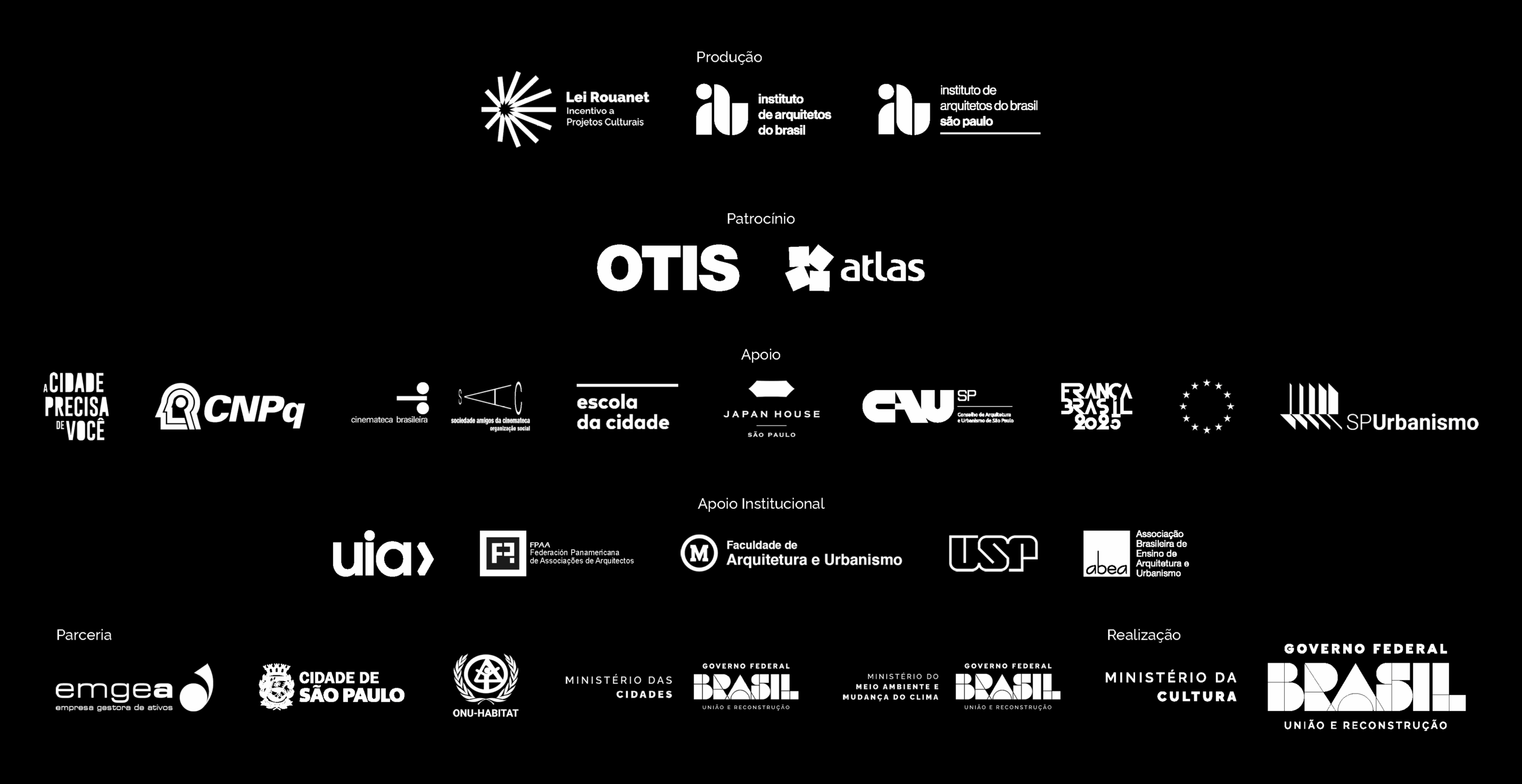
14th São Paulo International Architecture Biennale
Architectures for
an Overheated Planet
October 19, 2025
Ibirapuera Park, Sao Paulo - SP



14th São Paulo International Architecture Biennale
Architectures for
an Overheated Planet

October 19, 2025
Ibirapuera Park
Sao Paulo - SP

The 14th Biennale
The 14th Biennale
We live in a world of extreme climatic events, and the limit for human life, the point of no return, looms on the horizon. If architecture plays a part in the production of climatic extremes, resource use, and climate injustice, what is the role of architecture in reversing this scenario? Addressing extreme problems demands extreme, radical solutions. These can be at the cutting edge of technology and knowledge, or they can exist at the other end, on the margins: in the responses that emerge from the periphery of cities or in the traditional knowledge preserved in villages and quilombos (communities of escaped enslaved people).
Proposals generated within these different forms of knowledge, as well as from dialogue, friction, and mutual learning among them, offer new pathways to tackle global warming and adapt human habitats to the climatic extremes we already face. After a decade of decentralization, in 2025 the 14th International Architecture Biennale of São Paulo (BIAsp in Portuguese) will return to Ibirapuera Park to bring together, at Oca, a collection of these responses produced in the field of architecture from different parts of the planet. Another new feature of this edition of BIAsp, one of the most important forums for discussing the emerging challenges of architecture and urbanism, is the experimental construction and production of spatial solutions on-site.
Five axis will guide projects, experiences, experiments, and discussions aimed at transforming this landscape towards the creation of more resilient and adaptable cities, prepared to resume life after disasters.
The first axis, Preserving Forests and Reforesting Cities, suggests the radical incorporation of vegetation to reverse global warming by capturing carbon from the atmosphere and improving local microclimates to mitigate heatwaves.
The second axis, Embracing Water, will bring together experiences of stream renaturalization and Nature-Based Solutions to stabilize slopes and recover riverbanks, working in favor of the biogeochemical cycle of water.
The axis Refurbishing More and Building Green will address the adaptive reuse of obsolete buildings and the adoption of low-carbon sustainable construction systems to tackle the challenge of reducing greenhouse gas emissions associated with the construction and use of buildings.
Meanwhile, the axis Moving and Reaching Places Together with Renewable Energies will explore the possibilities of urban planning and rapid transit transportation networks to reduce the need for individual travel and promote active mobility, also considering the energy transition in public transport.
Finally, the axis Ensuring Climate Justice and Social Housing will focus on the disproportionate vulnerability of poorer populations (often racialized and with a strong presence of women and children) to extreme climate events. These communities, which have historically contributed the least to global warming, often inhabit high-risk areas—precarious housing settlements frequently located on floodplains and slopes. Due to its significance, this axis will cut across all others.
To construct the 14th BIAsp, we invite society to present and develop concrete proposals that unite advancements in climate science with ancestral knowledge, combining new socio-environmental technologies with traditional practices and materials. Proposals that together help us understand what architectures we need to inhabit a world beyond extremes.
Curatorial Committee
Curatorial Committee
The curation of the 14th São Paulo International Architecture Biennale is led by the Curatorial Committee, composed of six professionals from different regions of Brazil, whose backgrounds span architecture, urbanism, pedagogy, academic research, social activism, and cultural production. This group is accompanied by the Activity Curators, who are responsible for organizing specific events within the Biennale, including the Film Showcase, the Debate Forum, the Experimental Constructions, the Laboratories, and the Schools Competition. Together, they shape a Biennale that seeks to expand the dialogue between architecture, territory, and society.

Renato Anelli
Renato Anelli
Curator and Director of Culture at IABsp
Architect and urban planner, with a Master's in History from Unicamp and a Ph.D. from FAUUSP. He obtained the title of associate professor and full professor at EESC-USP, where he taught from 1986 to 2021. A researcher at CNPq since 2005, he has been a professor at FAU Mackenzie since 2021. He was involved with IAB São Carlos and with the São Paulo Architecture Biennales. Vice-president of the Bardi Institute Casa de Vidro, where he coordinated major management and conservation projects. He also served as Secretary of Public Works in São Carlos and was a visiting professor at Columbia University. Currently, he is the Director of Culture at IABsp.

Karina de Souza
Karina de Souza
Curator and Production Coordinator at IABsp
Architect and urban planner graduated from FAUUSP and a Master's student at the same institution. She has a postgraduate degree in Cultural Management from Senac and in the course Cidades em Disputa from Escola da Cidade. She coordinated the 13th São Paulo International Architecture Biennale and the Restaura! Comida e Escola project at the Tomie Ohtake Institute. Currently, she is the production coordinator at IABsp, curator of the 14th São Paulo International Architecture Biennale, and an independent cultural producer at Pauliceia Arte, Cultura e Design.

Marcos Cereto
Marcos Cereto
Curator and Vice President of IAB Nacional - Northern Region
Architect and urban planner, master and doctorate from PROPAR/UFRGS, researcher and professor at UFAM. He founded the Center for Modern Architecture in the Amazon (NAMA) and was awarded the IAB Centennial in 2022. He edited the magazine Amazônia Moderna (2017-2023) and is the editor of the Docomomo Brasil magazine. He has curated exhibitions of contemporary architecture in the Amazon, Paris and Seoul. Vice-president of the Northern Region of the IAB, Cereto stands out in the promotion of modern Amazonian architecture, a topic on which he has held several conferences in Brazil and abroad.
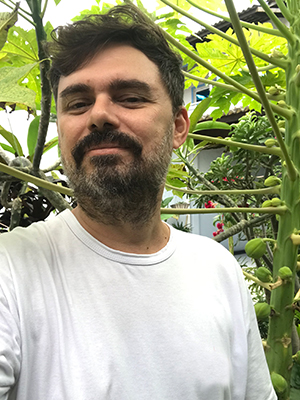
Clevio Rabelo
Clevio Rabelo
Architect, holds a Ph.D. in History of Architecture from FAUUSP, and is professor of Architectural Design at UFC. He coordinates the extension Casa-Embrião at the Carlos Marighella Occupation and several educational actions at the university. He was a jury member for the 9th Tomie Ohtake AkzoNobel Award and the competition for the Cultural, Social, and Sports Complex of Liga Solidária in São Paulo. He coordinates Arquitetura Bicha, a collective that researches projects and representations of architecture by LGBTQIA+ people.

Marcella Arruda
Marcella Arruda
Architect, urban planner and researcher, with a master's degree from PROURB-UFRJ, she has been working since 2011 in learning communities, networks and socially just and ecologically regenerative projects. President of the A Cidade Precisa de Você Institute and co-founder of the Brazilian Network of Collaborative Urbanism. She has participated in and curated several international meetings and events such as Urban 20, UN Habitat Innovate 4 Cities, Smart City LATAM, World Bank Forum Resilient Public Spaces, Venice Architecture Biennale, EASA, FIIU International Festival of Urban Interventions, Placemaking LATAM, Bienal de Arquitectura y Urbanismo de Chile, We Make the City Festival, São Paulo Architecture Biennial, Mostra Ecofalante, FICA International Environmental Film Festival, and Virada Sustentável.
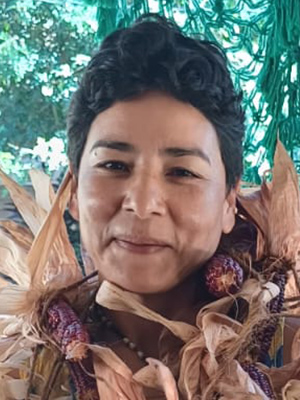
Jerá Guarani
Jerá Guarani
Indigenous leader and activist of the Guarani Mbya ethnicity, dedicated to preserving the culture, language, and rights of her people. She grew up in the Tenondé Porã village, located in the metropolitan region of São Paulo, where she has been an active voice for Indigenous education and the appreciation of cultural traditions. She has worked in various areas, including the fight for Indigenous land demarcation, environmental rights advocacy, and the strengthening of Indigenous identities in urban areas.

Claudia Costa Cabral
Claudia Costa Cabral
An architect born in Porto Alegre, she holds a PhD from the Universitat Politècnica de Catalunya. She is a full professor at UFRGS, coordinated PROPAR-UFRGS and leads the Research Group on Studies of Modern Latin American Architecture. Member of several scientific committees and ad hoc reviewer, she is the author of several publications on modern architecture and urbanism in Latin America, and is an academic reference in the field.

Marcelo Morettin
Marcelo Morettin
An architect graduated from USP, with a master's degree and a doctorate from Mackenzie, he founded the firm Andrade Morettin Arquitetos Associados. He has won awards such as the Tomie Ohtake AkzoNobel Prize and was a finalist for the Mies Crown Hall Americas Prize. His projects include the headquarters of the Instituto Moreira Salles and the Beacon School. A professor at FAU-Mackenzie, he has given lectures in Brazil and abroad and has made significant academic contributions.
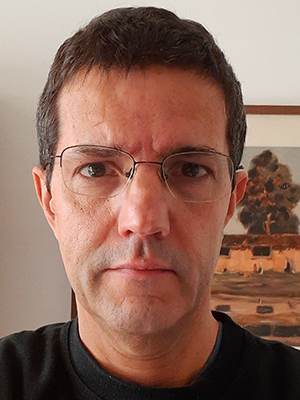
Lucas Fehr
Lucas Fehr
Urban Architect (USP, 1987), Master (1999) and Doctor (2010) from the same institution. Since 2016, he has coordinated the Architecture and Urban Planning course at Universidade Presbiteriana Mackenzie, where he is a professor and researcher in the groups “Theory-Project: Culture-Society” and “Construction Systems in Contemporary Architecture”. He coordinated Mosaico – Model Architecture Office (2005-2016). He participated in the last editions of the Pan-American Biennial of Quito and was a juror for the Medalla de Oro Award. Partner at Estúdio América de Arquitetura, he is co-author of award-winning projects, such as the Castro Alves Theater and the Museum of Memory and Human Rights.
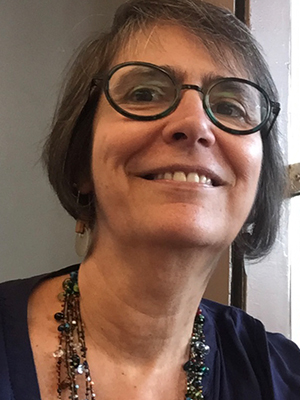
Naia Alban Suarez
Naia Alban Suarez
Architect graduated from UFBA, PhD from ETSAM and post-doctorate from the same institution. Professor at UFBA, she coordinates projects at the Superintendence of Environment and Infrastructure. Co-leader of research in architecture and member of the Executive Committee of the PHI International Network. Winner of the 9th Tomie Ohtake AkzoNobel Architecture Prize, she contributed to the preservation of historical heritage and is recognized for her projects and publications.
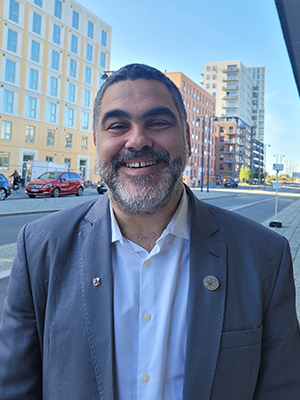
Nivaldo Andrade
Nivaldo Andrade
Architect and urban planner, he holds a master's and a doctorate from UFBA. He is a professor at UFBA and vice-president of the UIA for the Americas. He holds a scholarship from CNPq and is a member of the boards of IPHAN and ICOMOS Brazil. He is a co-author of award-winning projects, such as the Casa do Carnaval and the restoration of Terreiro de Jesus, in Salvador. He was president of the IAB and has a vast academic output and has served on juries for international competitions and awards.

Rafael Blas
Rafael Blas
Architect and art director with 20 years of experience in the audiovisual industry. He is currently pursuing a PhD and a master's degree in architecture and has produced productions for platforms such as Netflix and HBO. He coordinates and teaches postgraduate and bachelor's degree courses at Senac, Belas Artes and UEL. Since 2023, he has been a curator at CINECUBO IABsp. His research focuses on the intersection between architecture, modernity and cinematic environments.
Oca and Ibirapuera
Where:
Oca and Ibirapuera
The 14th BIAsp returns in 2025 to Ibirapuera Park, its historic headquarters, after a decade of decentralized editions, with the aim of bringing together academic, technological and social efforts to face the challenges imposed by climate change.
The event will focus on the Oca Pavilion and its surroundings. Designed by Oscar Niemeyer for the celebrations of the 4th Centennial of São Paulo in 1954, the Oca is one of the architectural landmarks of the park, integrating a group of buildings distributed around the Marquise, such as the Ibirapuera Auditorium, the Biennale Pavilion, the Brazilian Cultures Pavilion, the Afro Brazil Museum and the Museum of Modern Art.
Ibirapuera Park
Pedro Álvares Cabral Avenue, s/n – Gate 2.
Moema, Sao Paulo, SP
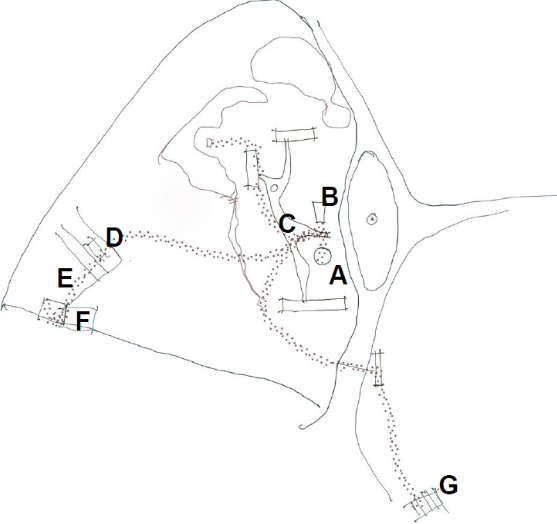
A)
Oca
Main exhibition
B)
Auditorium
Opening (to be confirmed)
C)
Marquise
Activities (to be confirmed)
D)
Serraria
Experimental constructions (to be confirmed)
E)
Viveiro Manequinho Lopes
Educational
F)
UMAPAZ
Workshops
G)
Cinemateca Brasileira
Architecture in Cinema Exhibition


